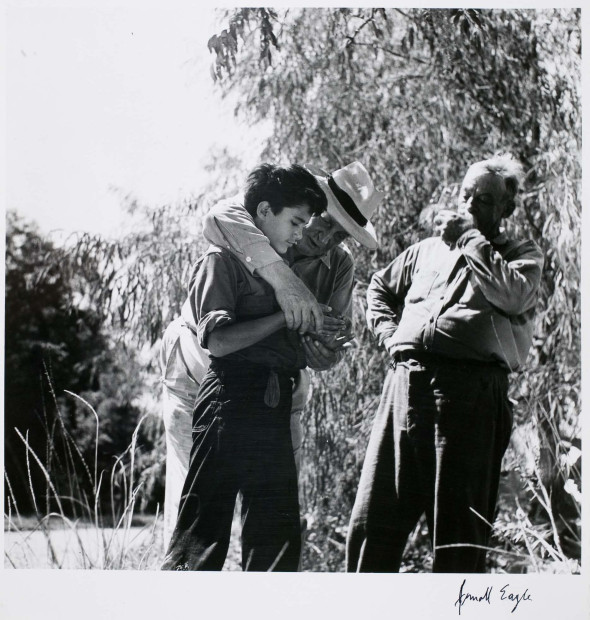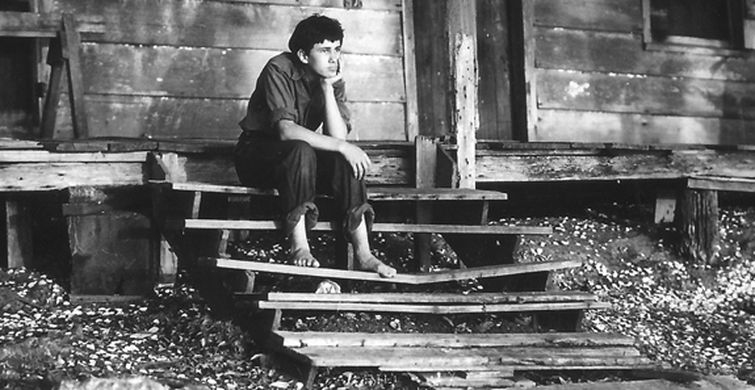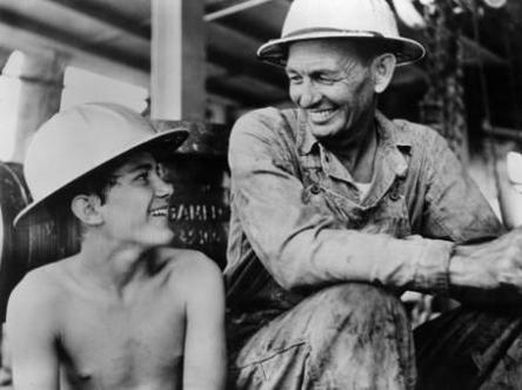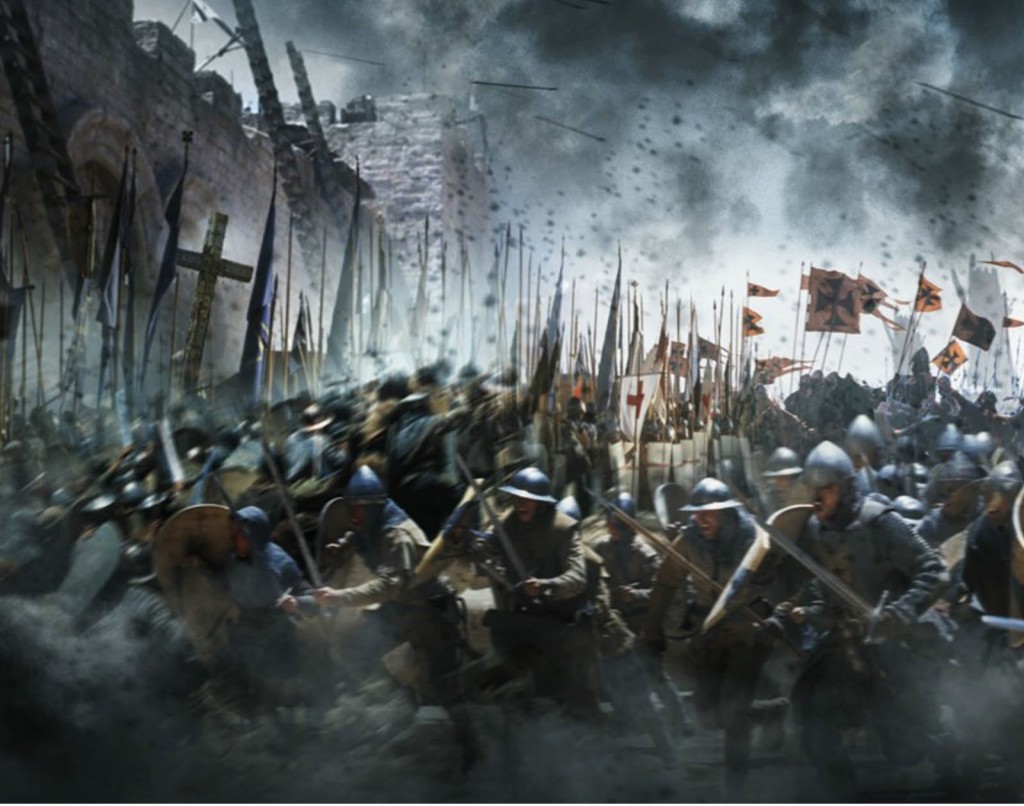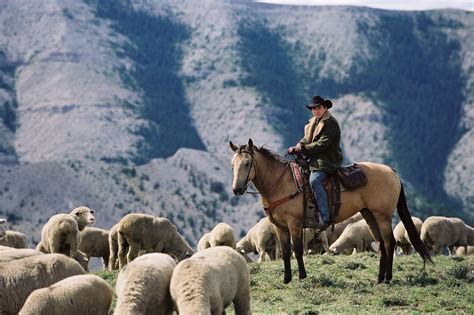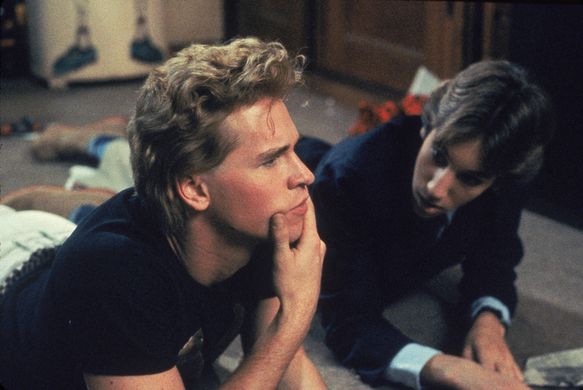 I’m fond of this goofy 1980s comedy about two whiz-kids who are scammed into working on a military laser project by a megalomaniac scientist. William Atherton played his patented “asshole” villain. Val Kilmer, who played the extroverted student, went on to a high-profile film career. Gabriel Jarret, who played the introvert, did not (it was perhaps an omen that his name was misspelled in the credits). His role was written with a degree of psychological realism, despite the absurd comedy plot. For once, the love interest isn’t a bombshell babe who is “plain” because she wears glasses and ties her hair back, then suddenly whips them off and unties her hair in the final scene. Instead, she is represented as extremely geeky. Boy geek falls for girl geek in a relatively credible way. For that alone, the film deserves some kind of award.
I’m fond of this goofy 1980s comedy about two whiz-kids who are scammed into working on a military laser project by a megalomaniac scientist. William Atherton played his patented “asshole” villain. Val Kilmer, who played the extroverted student, went on to a high-profile film career. Gabriel Jarret, who played the introvert, did not (it was perhaps an omen that his name was misspelled in the credits). His role was written with a degree of psychological realism, despite the absurd comedy plot. For once, the love interest isn’t a bombshell babe who is “plain” because she wears glasses and ties her hair back, then suddenly whips them off and unties her hair in the final scene. Instead, she is represented as extremely geeky. Boy geek falls for girl geek in a relatively credible way. For that alone, the film deserves some kind of award.
Category Archives: DP - Viewing 2006 - Page 4
(Coolidge 1985) Real Genius
14667. (Tab Hunter & Eddie Muller) Tab Hunter Confidential
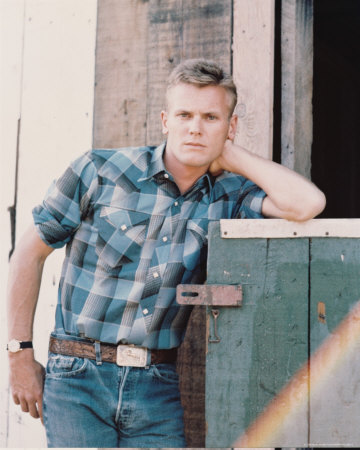 I was surprised at how much I learned about how Hollywood works from this biography of a star of the 1950’s. Tab Hunter was a “heart-throb”, an actor who was marketed for his handsomeness. I frankly don’t find his kind of looks very attractive, but many people do. His autobiography is “co-authored”, probably meaning that Hunter was extensively interviewed, provided tape recorded reminiscences, and the “co-author” put it together in first-person voice. It’s a perfectly valid way for an actor, who doesn’t happen to be an experienced writer, to tell his story. In this case, the result seems to be unusually honest. Hunter stumbled into movie acting, and was initially successful because of his looks. He was gay, and went through the complexities, strategies, and perils that gay actors had to face in the 1950s. What it particularly charming about the narrative is the fact that Hunter (real name Arthur Andrew Kelm), who had an impoverished childhood in a rather disfunctional single-parent family, was in person a rather bashful, reticent, and psychologically conservative person, more comfortable with horses than people. His wholesome, boy-next-door image was not an act. However, he was able to attract people like Anthony Perkins and Rudolf Nureyev as lovers. He moved easily in sophisticated circles in the theatre, and in Europe’s high society, without altering his persona. His acting career has never been taken seriously, though he did some fine work on the stage and in television, and clearly cared deeply about his craft. He struggled to get roles that didn’t consist mostly of posing shirtless. But in the end, he was done in by cultural shifts that put his image out of fashion. His most intelligent career move was to appear in John Waters’ 1980 low budget cult film, Polyester. That, and publicly coming out of the closet, won him the respect he had never gotten as a teen idol. The book is not vindictive, but it gives a very believable account of some of the nastier things that went on in the film industry in the 1950’s and 1960’s.
I was surprised at how much I learned about how Hollywood works from this biography of a star of the 1950’s. Tab Hunter was a “heart-throb”, an actor who was marketed for his handsomeness. I frankly don’t find his kind of looks very attractive, but many people do. His autobiography is “co-authored”, probably meaning that Hunter was extensively interviewed, provided tape recorded reminiscences, and the “co-author” put it together in first-person voice. It’s a perfectly valid way for an actor, who doesn’t happen to be an experienced writer, to tell his story. In this case, the result seems to be unusually honest. Hunter stumbled into movie acting, and was initially successful because of his looks. He was gay, and went through the complexities, strategies, and perils that gay actors had to face in the 1950s. What it particularly charming about the narrative is the fact that Hunter (real name Arthur Andrew Kelm), who had an impoverished childhood in a rather disfunctional single-parent family, was in person a rather bashful, reticent, and psychologically conservative person, more comfortable with horses than people. His wholesome, boy-next-door image was not an act. However, he was able to attract people like Anthony Perkins and Rudolf Nureyev as lovers. He moved easily in sophisticated circles in the theatre, and in Europe’s high society, without altering his persona. His acting career has never been taken seriously, though he did some fine work on the stage and in television, and clearly cared deeply about his craft. He struggled to get roles that didn’t consist mostly of posing shirtless. But in the end, he was done in by cultural shifts that put his image out of fashion. His most intelligent career move was to appear in John Waters’ 1980 low budget cult film, Polyester. That, and publicly coming out of the closet, won him the respect he had never gotten as a teen idol. The book is not vindictive, but it gives a very believable account of some of the nastier things that went on in the film industry in the 1950’s and 1960’s.
(Flaherty 1948) Louisiana Story
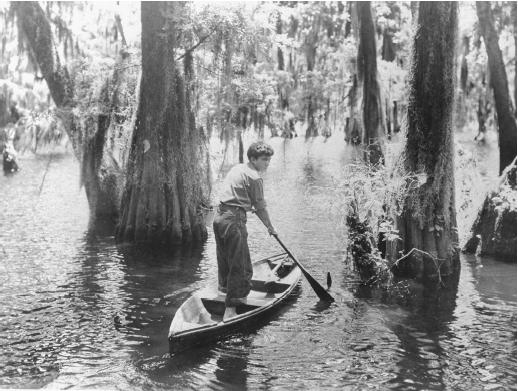 American filmmaker Robert Flaherty found fame producing and directing what we would today call “docudramas”, about people in exotic places. His first film, Nanook of the North (1922) about an Inuk hunter in the Canadian arctic, was a worldwide success. The film was acted out and staged in a way that disqualifies it as a “documentary” in the sense we use the word today — Nanook was really named Allakariallak, his “wife” wasn’t his wife, and so on, but there were no rules about such things at the time. It really amounted to what historical re-enactors do today. Flaherty followed this success, over the years with Moana (1926), set in Polynesia, Man of Aran (1934) set on an Irish coastal island, and Elephant Boy (1937), which turned a young Kannadiga boy from Mysore, Sabu Dastagir, into a Hollywood movie star.
American filmmaker Robert Flaherty found fame producing and directing what we would today call “docudramas”, about people in exotic places. His first film, Nanook of the North (1922) about an Inuk hunter in the Canadian arctic, was a worldwide success. The film was acted out and staged in a way that disqualifies it as a “documentary” in the sense we use the word today — Nanook was really named Allakariallak, his “wife” wasn’t his wife, and so on, but there were no rules about such things at the time. It really amounted to what historical re-enactors do today. Flaherty followed this success, over the years with Moana (1926), set in Polynesia, Man of Aran (1934) set on an Irish coastal island, and Elephant Boy (1937), which turned a young Kannadiga boy from Mysore, Sabu Dastagir, into a Hollywood movie star.
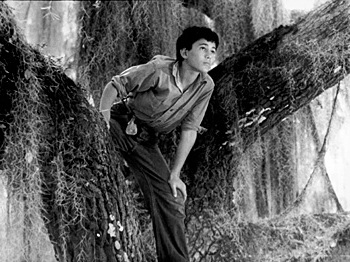 But to my mind, Flaherty’s greatest achievement was his last feature film, Louisiana Story (1948). It was commissioned by the Shell Oil Company to convey the “romance” of the introduction of an oil rig to the Louisiana bayous. This is the sort of idea that would leave an audience cold today, but it no doubt was completely sincere in 1948. But Flaherty wasn’t much interested in oil rigs. He was interested in the exotic atmosphere of Cajun life in the bayous and in the innocent wonderment of the boy. Flaherty usually took real people and made movies about them. But in this case, a narrative was contrived, and a local boy, Joseph Boudreaux played a character in reasonably true-to-life scenes. He was so photogenic that the camera hardly ever left him. The cinematography, by Richard Leacock, was crisp and evocative, all the more impressive because the lighting conditions must have been dreadful. The swamps of the bayou loomed like some fantastic, alien landscape. A bonus was the superb music by Virgil Thompson, a composer who once loomed large in American concert halls, but is unfortunately neglected today. Boudreaux, by the way, grew up to be an oil rigger.
But to my mind, Flaherty’s greatest achievement was his last feature film, Louisiana Story (1948). It was commissioned by the Shell Oil Company to convey the “romance” of the introduction of an oil rig to the Louisiana bayous. This is the sort of idea that would leave an audience cold today, but it no doubt was completely sincere in 1948. But Flaherty wasn’t much interested in oil rigs. He was interested in the exotic atmosphere of Cajun life in the bayous and in the innocent wonderment of the boy. Flaherty usually took real people and made movies about them. But in this case, a narrative was contrived, and a local boy, Joseph Boudreaux played a character in reasonably true-to-life scenes. He was so photogenic that the camera hardly ever left him. The cinematography, by Richard Leacock, was crisp and evocative, all the more impressive because the lighting conditions must have been dreadful. The swamps of the bayou loomed like some fantastic, alien landscape. A bonus was the superb music by Virgil Thompson, a composer who once loomed large in American concert halls, but is unfortunately neglected today. Boudreaux, by the way, grew up to be an oil rigger.
(Scott 2005) Kingdom of Heaven
The plot is lifted straight out of Walter Scott’s The Talisman. The characters spout ridiculous speeches, espousing modern sentiments, which would be highly improbable coming out of the mouths of twelfth-century people. But who cares? The battle sequences at the end are magnificent. Medieval siege techniques, with rolling siege towers and trebuchets, were every bit as spectacular as modern attacks with smart bombs and missiles. Visually, the historical detail seems fairly accurate to me. Riddley Scott always does something worth looking at, even if he sometimes has structural problems in story-telling. Visually, his instincts are always on the mark.
FILMS JANUARY-MARCH 2006
(Fletcher 1986) Blackadder II: Bells
(Fletcher 1986) Blackadder II: Head
(Fletcher 1986) Blackadder II: Potato
(Theakson 1994) Cadfael:Ep.4 ― Monk’s Hood Read more »
(Annaud 1986) The Name of the Rose
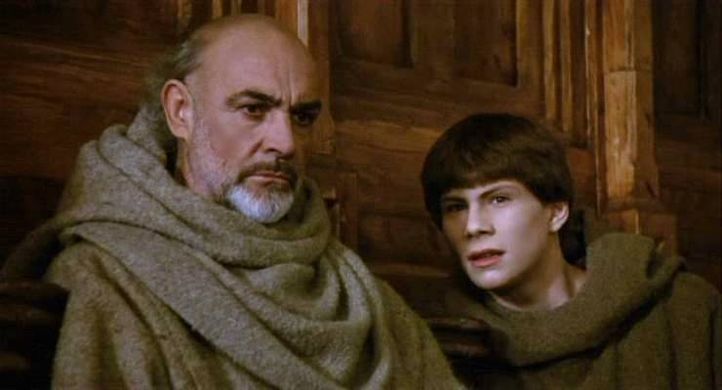 I’ve never understand why this wonderful film had such a poor critical reception. Critics complained that they could not follow the story. In fact, this medieval mystery, a loving tribute to Conan Doyle’s Sherlock Holmes stories, by Umberto Eco was very faithfully translated to the screen. Everything is perfectly clear if the viewer actually pays attention (which I have not noticed film critics being particularly good at). All the performances are good, but Sean Connery, as the Francescan detective William of Baskerville, is superb. You can tell when an actor understands, not only the meaning and context of his lines, but their implications as well. Yes, the film is slowly paced, and requires some effort from the viewer to appreciate. But it has moments of great beauty, especially when William’s character is revealed in his interactions with his novice, Adsel of Melk (Christian Slater). I strongly recommend this film.
I’ve never understand why this wonderful film had such a poor critical reception. Critics complained that they could not follow the story. In fact, this medieval mystery, a loving tribute to Conan Doyle’s Sherlock Holmes stories, by Umberto Eco was very faithfully translated to the screen. Everything is perfectly clear if the viewer actually pays attention (which I have not noticed film critics being particularly good at). All the performances are good, but Sean Connery, as the Francescan detective William of Baskerville, is superb. You can tell when an actor understands, not only the meaning and context of his lines, but their implications as well. Yes, the film is slowly paced, and requires some effort from the viewer to appreciate. But it has moments of great beauty, especially when William’s character is revealed in his interactions with his novice, Adsel of Melk (Christian Slater). I strongly recommend this film.
Read more »
(Persky 1980) Serial
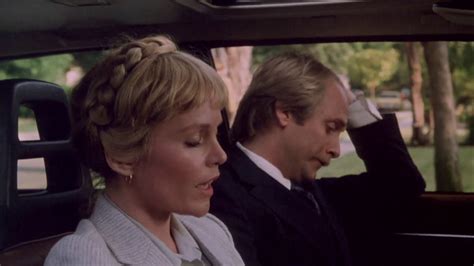 Cyra McFadden’s oddball satire of life in Marin County, an affluent suburb north of San Francisco, during the late 1970’s, was made into a film in 1980. I showed this wonderful little piece of cultural time-travel to a young friend. Nothing could better show how much a culture can transform in a generation or two. For him, it was a voyage to another planet, with incomprehensible values, customs and jargon. Even for me, who was exposed to Marin county not too many years afterward, the movie seemed bizarre. A lot of water has passed under the bridge. The film, starring Martin Mull in the lead role of a middle-aged husband overwhelmed by incomprehensible trends and psychobabble, captured the ambiance perfectly. McFadden’s work was nothing like the scorpion viciousness of a New Yorker’s satirist— it was pure Stephen Leacock.
Cyra McFadden’s oddball satire of life in Marin County, an affluent suburb north of San Francisco, during the late 1970’s, was made into a film in 1980. I showed this wonderful little piece of cultural time-travel to a young friend. Nothing could better show how much a culture can transform in a generation or two. For him, it was a voyage to another planet, with incomprehensible values, customs and jargon. Even for me, who was exposed to Marin county not too many years afterward, the movie seemed bizarre. A lot of water has passed under the bridge. The film, starring Martin Mull in the lead role of a middle-aged husband overwhelmed by incomprehensible trends and psychobabble, captured the ambiance perfectly. McFadden’s work was nothing like the scorpion viciousness of a New Yorker’s satirist— it was pure Stephen Leacock.
MidComer Murders [television series]
![06-03-09 VIEW MidSomer Murders [television series]](http://www.philpaine.com/wp-content/uploads/2006/03/06-03-09-VIEW-MidSomer-Murders-television-series.jpg) I love all of the “MidSomer Murders”. John Nettles (as the Chief inspector) and Daniel Casey (as his bone-headed side-kick). The production values are first-rate, the acting top-notch, the scripts are well-written. Every one of the tiny, picturesque villages in the fictional English county of MidSomer is seething with hate, jealousy, secret sins, thwarted ambitions, star-crossed love, kinky sex, and murder, murder, murder. Detroit and South L.A. have nothing on MidSomer villages like Badger’s Drift, Ferne Basset, Aspern Tallow, and Midsomer Mallow. Stylistically, the definitely sits in the “cosy” tradition of English mysteries, the heritage of Agatha Christie. Nettles creates one of the most likeable fictional detectives on the screen. There are plenty of neat literary references to catch (especially to Jacobean drama) for those who take pleasure in such things, and plenty of witty jibes at contemporary mores for those who are more present-oriented. The mystery plots are absurdly improbable, in the best Agatha Christie tradition.
I love all of the “MidSomer Murders”. John Nettles (as the Chief inspector) and Daniel Casey (as his bone-headed side-kick). The production values are first-rate, the acting top-notch, the scripts are well-written. Every one of the tiny, picturesque villages in the fictional English county of MidSomer is seething with hate, jealousy, secret sins, thwarted ambitions, star-crossed love, kinky sex, and murder, murder, murder. Detroit and South L.A. have nothing on MidSomer villages like Badger’s Drift, Ferne Basset, Aspern Tallow, and Midsomer Mallow. Stylistically, the definitely sits in the “cosy” tradition of English mysteries, the heritage of Agatha Christie. Nettles creates one of the most likeable fictional detectives on the screen. There are plenty of neat literary references to catch (especially to Jacobean drama) for those who take pleasure in such things, and plenty of witty jibes at contemporary mores for those who are more present-oriented. The mystery plots are absurdly improbable, in the best Agatha Christie tradition.
(Beavan 2003) A History of Britain: Episode 15 — The Two Winstons [20th Century]
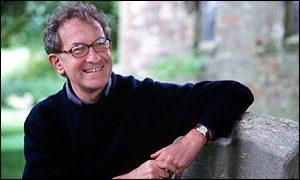 This is the final episode in Schama’s series, and the best. The “two Winstons” of the title are Winston Churchill, and “Winston Smith”, the fictional hero of George Orwell’s 1984, which Schama uses to refer to Orwell himself. Following the lives of these two obviously very different men, Schama explores several dimensions of Britain’s social and political history in the 20th Century. His narrative is witty, intelligent, and original. His comments on both men are right on the mark. I can tell that Schama got to know Orwell through his remarkable diaries and journalism, which were published in paperback in the 1970s, and made a profound impression on all sorts of people (myself included).
This is the final episode in Schama’s series, and the best. The “two Winstons” of the title are Winston Churchill, and “Winston Smith”, the fictional hero of George Orwell’s 1984, which Schama uses to refer to Orwell himself. Following the lives of these two obviously very different men, Schama explores several dimensions of Britain’s social and political history in the 20th Century. His narrative is witty, intelligent, and original. His comments on both men are right on the mark. I can tell that Schama got to know Orwell through his remarkable diaries and journalism, which were published in paperback in the 1970s, and made a profound impression on all sorts of people (myself included).
Schama is an astonishingly prolific English historian who has produced some of the most readable history books of this generation. It turns out that he has a good personality to present his ideas on television, and this series is extremely entertaining. It also gets better as the series goes. Schama is most at home in “modern” history (i.e. sixteenth century onward). So he rushes through through everything up to the Norman conquest in the first episode. The next two episodes focus on the Norman and Angevin kings and their soap-operatic struggles (everyone hold up their hands who picture Eleanor of Aquitaine as Katherine Hepburn). The first three episodes are not as good as the ones that follow. When Schama gets into the areas of social and economic history that he’s most comfortable in, the series becomes excellent.
(Ang Lee 2005) Brokeback Mountain
 I have to be the only person who went to this movie to see the scenery and the sheep. A long time ago, I was a shepherd. I spent two and a half years working various sheep farms. So I’ll skip making the obvious comments about this movie. The Marching Morons, in their tens of millions, are no doubt up in arms about this “gay western”. But there’s no point in debating with ignorant savages, so I won’t waste my time doing so. See the film. It’s not a masterpiece, but it’s a well-crafted love story and character study with some superb acting.
I have to be the only person who went to this movie to see the scenery and the sheep. A long time ago, I was a shepherd. I spent two and a half years working various sheep farms. So I’ll skip making the obvious comments about this movie. The Marching Morons, in their tens of millions, are no doubt up in arms about this “gay western”. But there’s no point in debating with ignorant savages, so I won’t waste my time doing so. See the film. It’s not a masterpiece, but it’s a well-crafted love story and character study with some superb acting.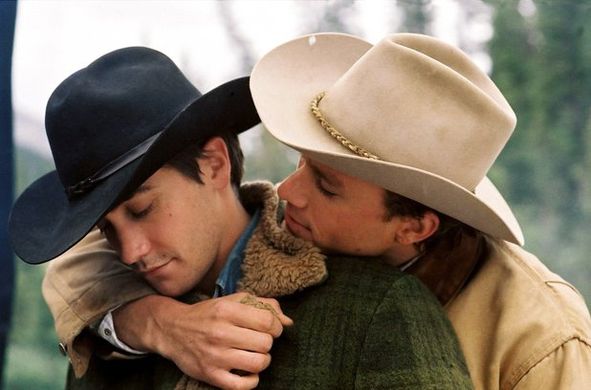 Now, I wasn’t particularly eager to see a story about true love muddled and thwarted by a dumb culture. But Rodrigo Prieto is a good cinematographer, and I am homesick for mountains. Well it didn’t take me more than a few minutes to figure out that it couldn’t have been filmed in Wyoming, where the story is set. A few of the establishing shots were of the Tetons, but most of the time the mountains looked all wrong. Those huge diagonal slabs with castelate peaks, and unbroken masses of douglas fir and spruce sweeping down into crystalline lakes in deep intramontane trenches — well, that’s Canadian Rockies [see photo above]. Wyoming mountains have a different look.
Now, I wasn’t particularly eager to see a story about true love muddled and thwarted by a dumb culture. But Rodrigo Prieto is a good cinematographer, and I am homesick for mountains. Well it didn’t take me more than a few minutes to figure out that it couldn’t have been filmed in Wyoming, where the story is set. A few of the establishing shots were of the Tetons, but most of the time the mountains looked all wrong. Those huge diagonal slabs with castelate peaks, and unbroken masses of douglas fir and spruce sweeping down into crystalline lakes in deep intramontane trenches — well, that’s Canadian Rockies [see photo above]. Wyoming mountains have a different look.
The sheep. Well, there was some stuff that was right. The old Euskalduna with a beret is something you would have seen in that time and place. Some of the work the main characters where shown doing was correct. But all the sheep were freshly shorn and marked, and they were still freshly shorn and marked after they had supposedly been pasturing up in the mountains for months! There wasn’t a dingleberry in sight. The main characters where not shown interacting with the dogs, which were nowhere to be seen, most of the time. Take note, Ang Lee, I’ll be watching… next time, get the sheep right.
